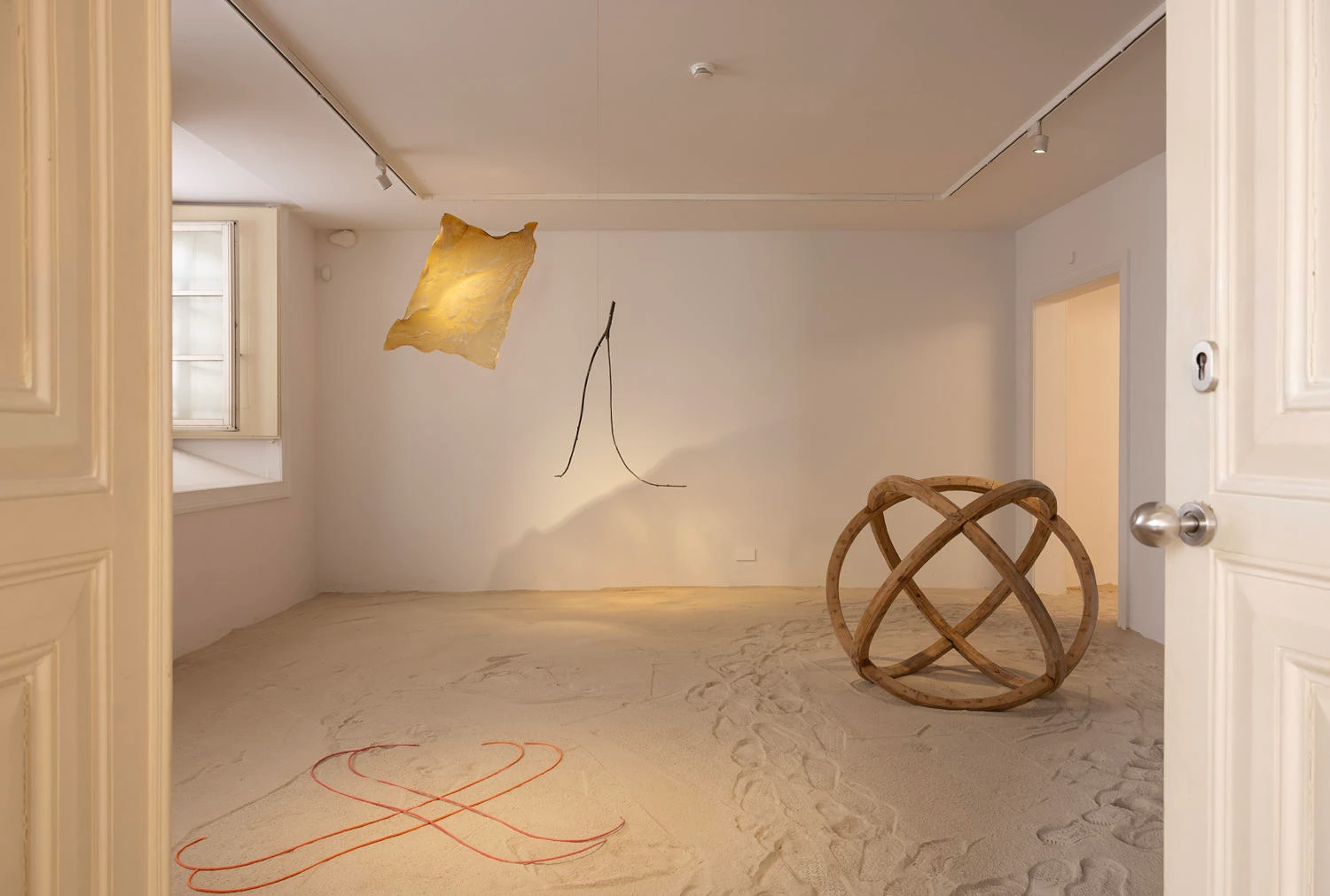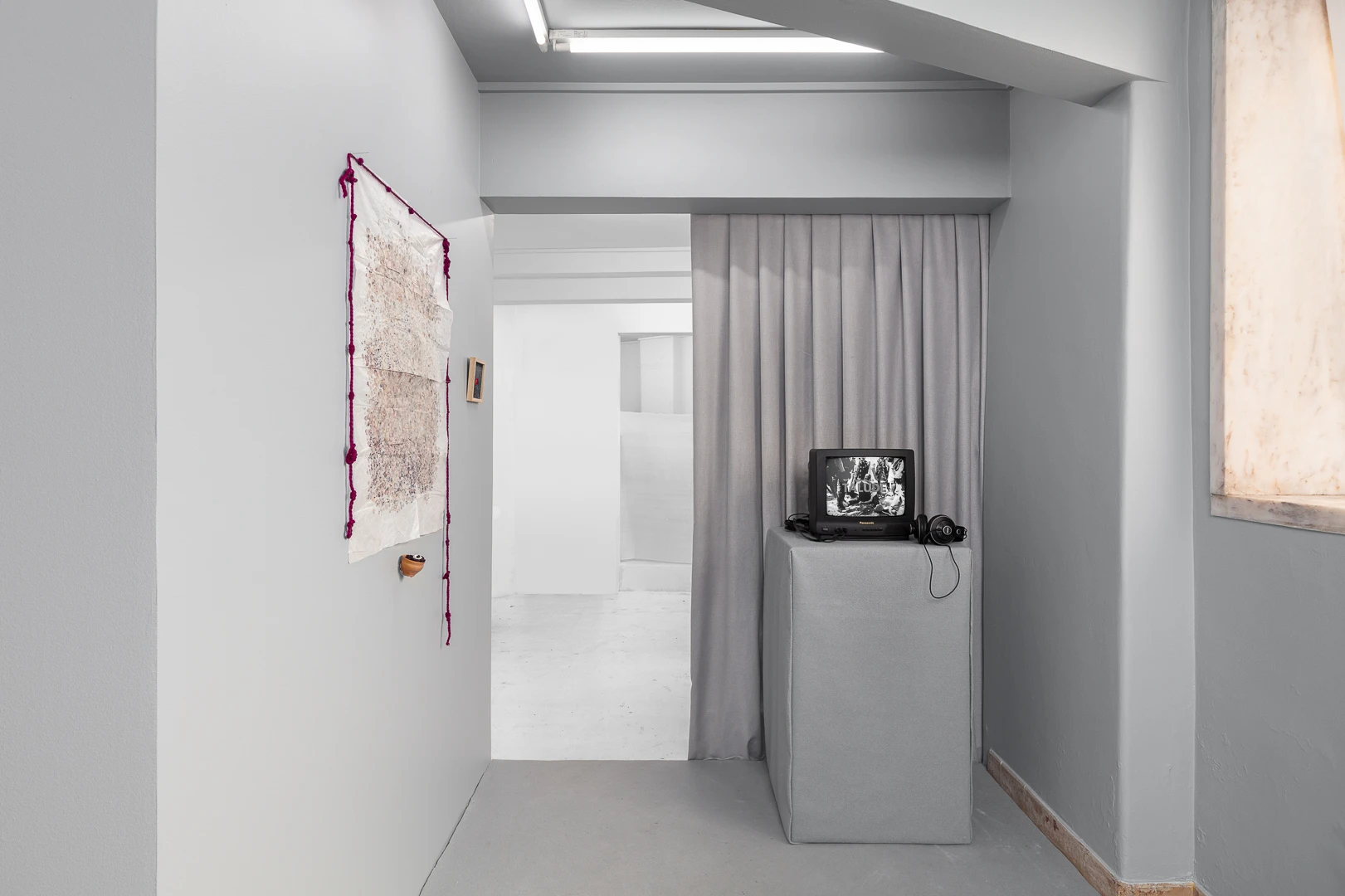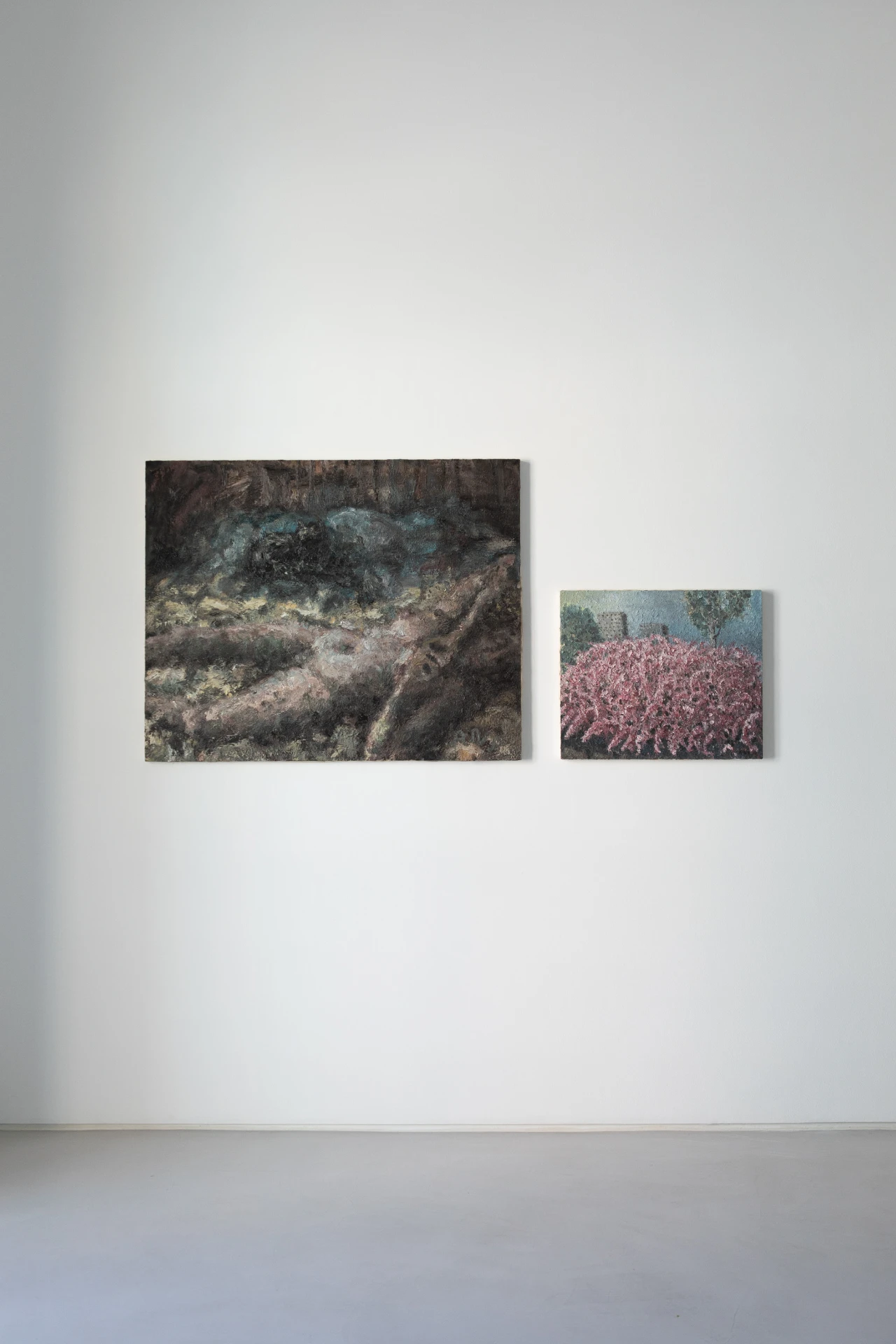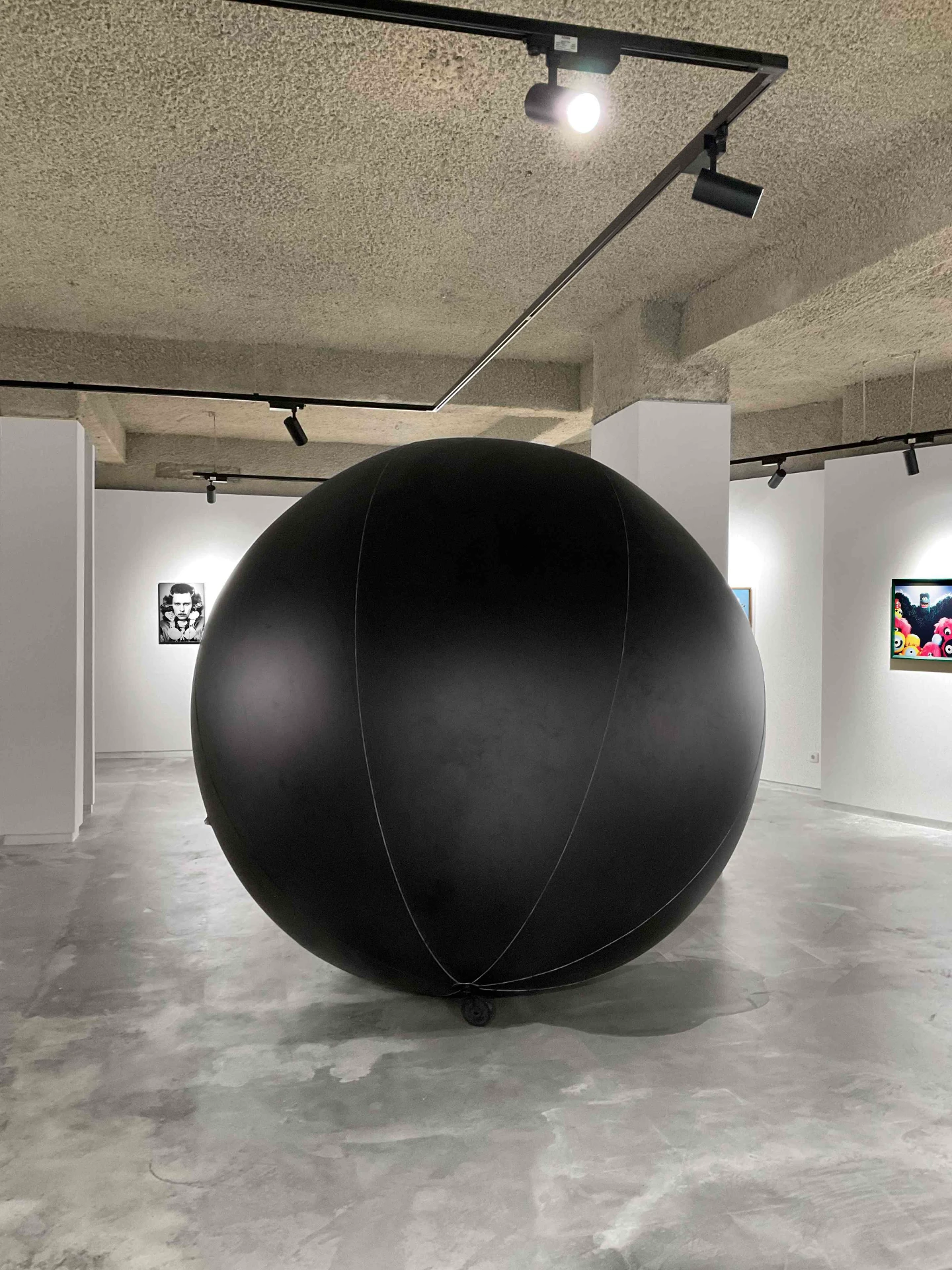article
The possibility of the ephemeral: Lawrence Weiner at the National Pantheon
Lawrence Weiner (1942–2021) was one of the central figures of conceptual art, a movement that, beginning in the 1960s, shifted the focus from the physical object to the idea. For Weiner, words functioned as a sculptural medium capable of existing in multiple forms, whether on a wall or in a book. The phrases he used were precise, devoid of imperatives or narratives, and presented as material that invites the observer to take an active role in their interpretation, constructing meaning and meaning from their personal experience.
In the National Pantheon, a monument of stone and silence, Weiner's installation appears as a crack. On the walls, vertically, one can read the phrases ‘Placed above the equator,’ ‘Below the equator,’ ‘To the right of the equator,’ and ‘To the left of the equator.’ And on the floor, in a circle, the words ‘Around the world’ unfold. The installation calls upon the body of those who walk through it. The phrases, arranged above eye level or underfoot, compel movement, reading with the whole body, reconfiguring our position in space.
The equator, the invisible line that divides the Earth into two halves, is one of the central elements of the work. The word derives from the Latin aequator, which means “equal” in the phrase circulus aequator diei et noctis, which translates as “circle that equalises day and night”. The etymological origin of “equator” refers to the promise of balance between the northern and southern hemispheres. It is a categorisation that served to order the geography of the world, but which ended up creating a hierarchy: the north above, the south below, establishing inequalities between populations. Weiner exposes this artifice and subverts it: by presenting the coordinates without assigning value or direction, she gives us back the freedom and responsibility to reorient ourselves. The installation offers visitors the chance to situate themselves, to choose where is above and where is below, where the world begins or can begin again. Weiner's words demand a performative reading, where reading is walking.
Around us are the tombs of Vasco da Gama, Pedro Alvares Cabral, Infante D. Henrique and Afonso de Albuquerque, who helped build the Portuguese imperial narrative — a narrative constructed from violence over other territories and the cartography of the world according to a European logic of domination. Thus, Weiner's phrases return us to the abstraction of the line that divides and exposes everything, and confront us with the paradox of a history marked by asymmetries and inequalities between hemispheres. In a place like the Pantheon, where the symbolic function is to fix memories, attribute value and monumentalise achievements, Weiner's proposal is radical because it shifts the gaze from the past to the present.
Weiner intervenes in a place marked by the monumentality of stone, by the rhetoric of eternity, by the consecration of those who, according to the established order, were worthy of memory. In a space so charged with symbolism — political, historical, patriarchal — her installation appears as a fracture. The choice of simple phrases, suspended in meaning, shifts language from the realm of authority to that of speculation. They neither order nor describe; they merely situate.
If the names engraved on the tombs seek to resist time, Weiner's phrases accept erosion. They work with the fragility, the impermanence of language and meaning. They are works made of language, which have no weight, volume, nor aspire to material eternity. At the centre of a national monument, where everything was built to last forever, Weiner inscribes the possibility of the ephemeral.
The installation VOLTA AO MUNDO/AROUND THE WORLD, by Lawrence Weiner, can be visited at the National Pantheon until August 31.
BIOGRAPHY
Laurinda Branquinho (Portimão, 1996) has a degree in Multimedia Art - Audiovisuals from the Faculty of Fine Arts of Universidade de Lisboa. She did an internship in the Lisbon Municipal Archive Video Library, where she collaborated with the project TRAÇA in the digitization of family videos in film format. She recently finished her postgraduate degree in Art Curatorship at NOVA/FCSH, where she was part of the collective of curators responsible for the exhibition “Na margem da paisagem vem o mundo” and began collaborating with the Umbigo magazine.
ADVERTISING
Previous
article

13 Aug 2025
The exercise-works of Pedro O Novo
By Maria Inês Augusto
Next
article

18 Aug 2025
Geofilia: Gørvell , Mariana Caló and Francisco Queimadela, at Brotéria
By José Pardal Pina
Related Posts


-nwaos.jpg)
